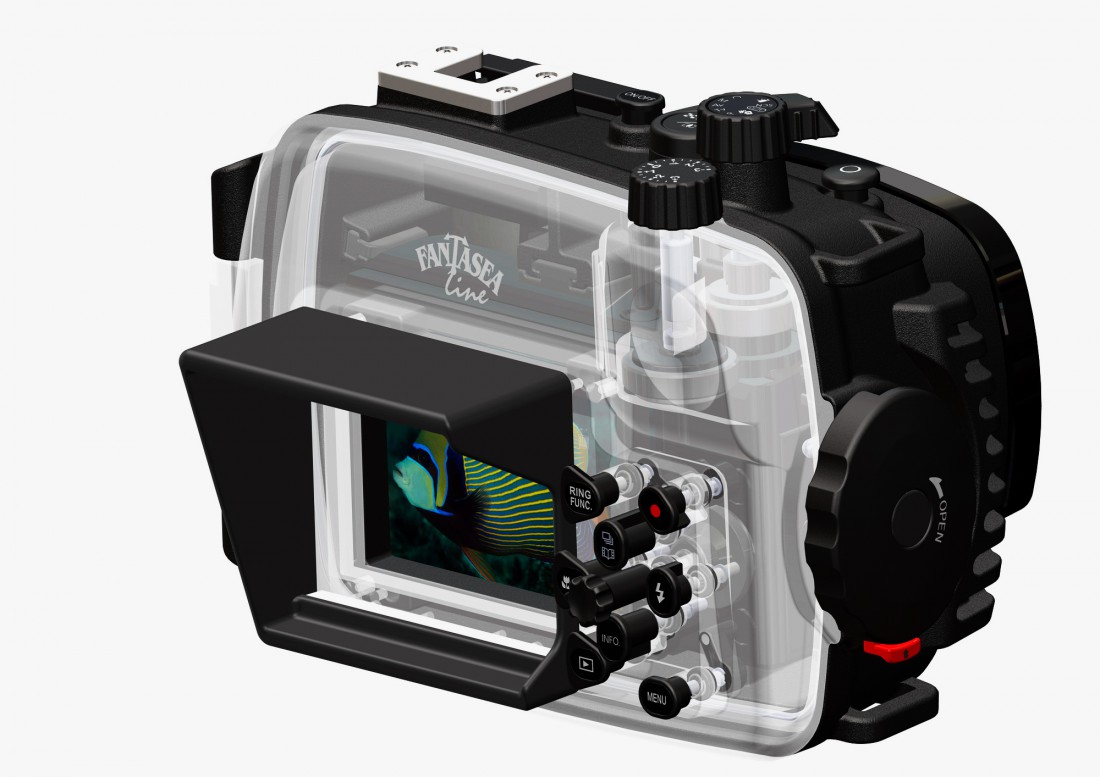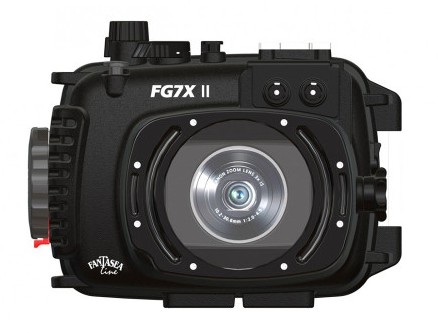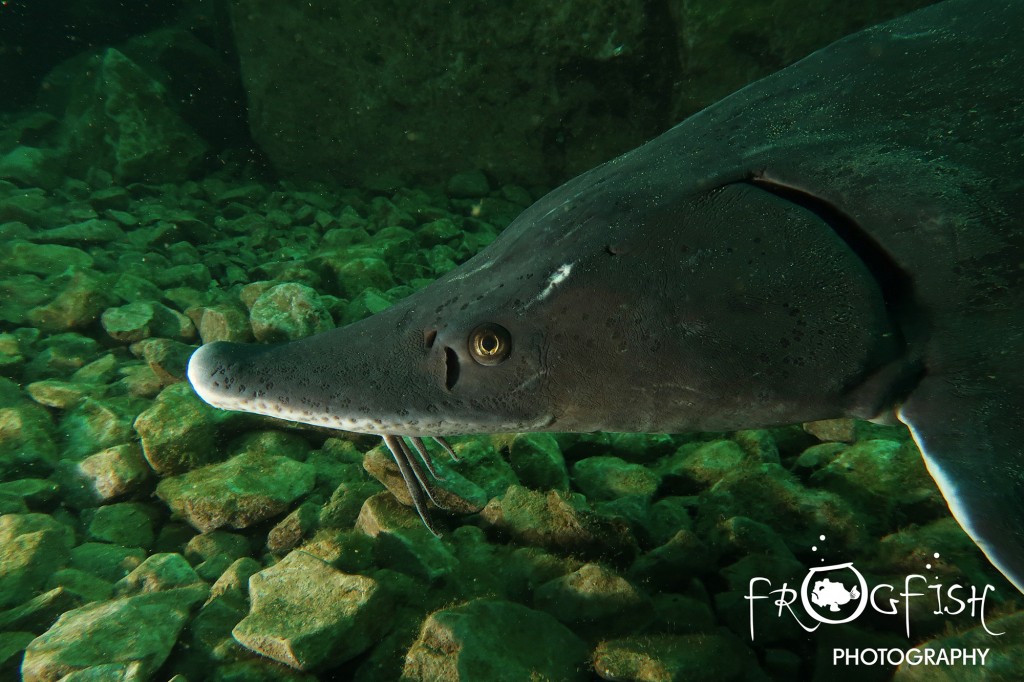News
S.U.P.E.R. Part 16: Fantasea Housing for the Canon G7X MKII

In our ongoing series S.U.P.E.R. (Scubaverse’s Underwater Photography Equipment Reviews), Scubaverse.com’s underwater photography editors Nick and Caroline Robertson Brown review new underwater photography equipment, general diving equipment, and some older favourites too.
For the sixteenth instalment of S.U.P.E.R., Nick and Caroline take a look at the new housing from Fantasea for the Canon G7X MKII.
 Fantasea are producing some great housings that are tremendous value for money at the moment. Recent improvements to the design mean that now the housings have a 67mm thread on the front to make using wet lenses easier. In addition to this, the housings have a cold shoe mount which is great for adding a focusing light to the system. Included with this housing comes some essential accessories like a moisture alarm, hand strap and protective port cover – all features than can sometimes mean you get hit for extra £££. It is depth rated to 60m too. All very impressive for a housing that costs less than £500.
Fantasea are producing some great housings that are tremendous value for money at the moment. Recent improvements to the design mean that now the housings have a 67mm thread on the front to make using wet lenses easier. In addition to this, the housings have a cold shoe mount which is great for adding a focusing light to the system. Included with this housing comes some essential accessories like a moisture alarm, hand strap and protective port cover – all features than can sometimes mean you get hit for extra £££. It is depth rated to 60m too. All very impressive for a housing that costs less than £500.
I took it along to our favourite place for testing out new gear, Capernwray, to see what it was like to use. As always with these tests, I put on my 5mm gloves to make sure that the system works OK for those who like their diving in cooler waters, and not just for tropical underwater photography. As the sturgeon are still congregating in one place, we spent much of our dive sat at 6m with these enigmatic fish. To fight the gloom, I attached an INON Grip Base and telescopic arm, a Z-240 strobe, fired via fibre optic cable, to the system. I also used the Fantasea Radiant 1000x spotting light, mounted, neatly in the cold-shoe mount. The grip base meant I did not use the hand strap that comes with the housing, but having used this with a similar housing, I know they work just fine.
The camera itself is one of the top compact cameras on the market at the moment. It features a 24-100mm equivalent lens and its biggest selling point is the large 1-inch 20.1 megapixel sensor. The most important feature in any housing, for me, is the ability to access all the controls without too much fuss underwater. This is certainly the case for the Fantasea housing. The housing has 2 control knobs that can be used to change aperture and shutter speed, and I setup the menu button to be ready on ISO should I want to make any changes. All the buttons are clearly labelled and are wide enough to use even with thick gloves without any problem. If you forget to pop up the flash before you get into the water – no problem – you can do this whilst you are underwater.
I really enjoyed using the system, which is really straight forward and simple to use, and look forward to getting it back in the water to try with some wet lenses. It is small and tidy, but with that has not lost any functionality or the ability to add to the system with lights, strobes and lenses. Be careful with wide angle lenses with this setup, as some are not compatible with the Canon G7X mkII, so do not assume that an existing lens you might already own will work on this system too.
This camera and housing system is fun and easy to use. The Fantasea housing offers real value for money, with plenty of useful features thrown in.
Fantasea is distributed in the UK by www.blue-orb.uk.
For more from Nick and Caroline, visit www.frogfishphotography.com.
Gear News
Scubapro Free Octopus Promotion 2024

Free Octopus with every purchase of a SCUBAPRO regulator system
Just in time for the spring season, divers can save money with the FREE OCTOPUS SPRING PROMOTION! Until July 31st SCUBAPRO offers an Octopus for free
with every purchase of a regulator system!
Get a free S270 OCTOPUS with purchase of these combinations:
MK25 EVO or MK19 EVO with A700
MK25 EVO or MK19 EVO with S620Ti
MK25 EVO or MK19 EVO with D420
MK25 EVO Din mit S620Ti-X
Get a free R105 OCTOPUS with purchase of the following combinations:
MK25 EVO or MK19 EVO with G260
MK25 EVO or MK17 EVO with S600
SCUBAPRO offers a 30-year first owner warranty on all regulators, with a revision period of two years or 100 dives. All SCUBAPRO regulators are of course certified according to the new European test standard EN250-2014.
Available at participating SCUBAPRO dealers. Promotion may not be available in all regions. Find an authorized SCUBAPRO Dealer at scubapro.com.
More information available on www.scubapro.com.
Blogs
Northern Red Sea Reefs and Wrecks Trip Report, Part 3: The Mighty Thistlegorm

Jake Davies boards Ghazala Explorer for an unforgettable Red Sea diving experience…
Overnight, the wind picked up, making the planned morning dive a bit bumpy on the Zodiacs to the drop point on Thomas Reef. There, we would dive along the reef before descending through the canyon and then passing under the arch before ascending the wall with a gentle drift. The site provided great encounters with more pelagic species, including shoals of large barracuda, tuna, and bigeye trevally.
Once back on the boat, it was time to get everything tied down again as we would head back south. This time, with the wind behind us, heading to Ras Mohammed to dive Jackfish Alley for another great gentle drift wall dive before then heading up the coast towards the Gulf of Suez to moor up at the wreck of the Thistlegorm. This being the highlight wreck dive of the trip and for many onboard, including myself, it was the first time diving this iconic wreck. I had heard so much about the wreck from friends, and globally, this is a must on any diver’s list. Fortunately for us, there was only one other boat at the site, which was a rarity. A great briefing was delivered by Ahmed, who provided a detailed background about the wreck’s history along with all the required safety information as the currents and visibility at the site can be variable.

Kitting up, there was a lot of excitement on deck before entering the water and heading down the shoreline. Descending to the wreck, there was a light northerly current which reduced the visibility, making it feel more like the conditions that can be found off the Welsh coast. At 10m from the bottom, the outline of the wreck appeared as we reached the area of the wreck which had been bombed, as our mooring line was attached to part of the propeller shaft. Arriving on deck, instantly everywhere you looked there were many of the supplies which the ship was carrying, including Bren Carrier tanks and projectiles that instantly stood out.

We headed around the exterior, taking a look at the large propeller and guns mounted on deck before entering the wreck on the port side to take a look in the holds. It was incredible to see all the trucks, Norton 16H, and BSA motorcycles still perfectly stacked within, providing a real snapshot in time.

Overall, we had four dives on the Thistlegorm, where for all of the dives we were the only group in the water, and at times, there were just three of us on the whole wreck, which made it even more special, especially knowing that most days the wreck has hundreds of divers. Along with the history of the wreck, there was plenty of marine life on the wreck and around, from big green turtles to batfish, along with shoals of mackerel being hunted by trevally. Some unforgettable dives.

The final leg of the trip saw us cross back over the Suez Canal to the Gobal Islands where we planned to stay the night and do three dives at the Dolphin House for the potential of sharing the dive with dolphins. The site, which included a channel that was teeming with reef fish, especially large numbers of goatfish that swam in large shoals along the edge of the reef. These were nice relaxing dives to end the week. Unfortunately, the dolphins didn’t show up, which was okay as like all marine life they are difficult to predict and you can’t guarantee what’s going to be seen. With the last dive complete, we headed back to port for the final night where it was time to clean all the kit and pack before the departure flight the next day.

The whole week from start to finish on Ghazala Explorer was amazing; the boat had all the facilities you need for a comfortable week aboard. The crew were always there to help throughout the day and the chefs providing top quality food which was required after every dive. The itinerary providing some of the best diving with a nice mixture of wreck and reef dives. I would recommend the trip to anyone, whether it’s your first Red Sea liveaboard in the Red Sea or you’re revisiting. Hopefully, it’s not too long before I head back to explore more of the Red Sea onboard Ghazala Explorer.

To find out more about the Northern Red Sea reef and wrecks itineraries aboard Ghazala Explorer, or to book, contact Scuba Travel now:
Email: dive@scubatravel.com
Tel: +44 (0)1483 411590
Photos: Jake Davies / Avalon.Red
-

 News3 months ago
News3 months agoHone your underwater photography skills with Alphamarine Photography at Red Sea Diving Safari in March
-

 News3 months ago
News3 months agoCapturing Critters in Lembeh Underwater Photography Workshop 2024: Event Roundup
-

 Marine Life & Conservation Blogs2 months ago
Marine Life & Conservation Blogs2 months agoCreature Feature: Swell Sharks
-

 Blogs2 months ago
Blogs2 months agoMurex Resorts: Passport to Paradise!
-

 Blogs2 months ago
Blogs2 months agoDiver Discovering Whale Skeletons Beneath Ice Judged World’s Best Underwater Photograph
-

 Marine Life & Conservation2 months ago
Marine Life & Conservation2 months agoSave the Manatee Club launches brand new webcams at Silver Springs State Park, Florida
-

 Gear Reviews3 months ago
Gear Reviews3 months agoGear Review: Oceanic+ Dive Housing for iPhone
-

 Gear Reviews2 weeks ago
Gear Reviews2 weeks agoGEAR REVIEW – Revolutionising Diving Comfort: The Sharkskin T2 Chillproof Suit





